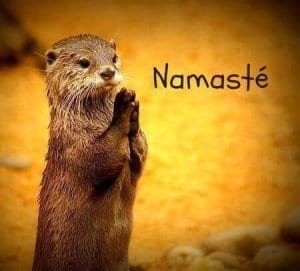Written by Andy Vantrease
As someone who enjoys writing, I often think how important words are to our existence. They enable us to communicate, form relationships, adopt belief systems and complete transactions for goods that keep us alive. They’re part of how we present ourselves every day to the world; the words we choose directly affect how we connect with people. Language is woven into almost everything we do as humans, and often we view silence, or a lack of words, as awkward and uncomfortable, opening our mouths again as soon as there’s a lull in the exchange.
So, you can imagine, when I began introspective practices – meditation, yoga, Qi Gong – how perturbed I was to encounter experiences that I could not fully explain using my mother tongue. Not only was I at a loss for words, but so too were my mentors, teachers and healers after certain classes and sessions. Each time I went deeper into my heart, exploring energies and habits of the self, I tripped over explanations, because the feelings are not justified using Webster or Merriam’s accepted collections. The emotions are too … intense, complex, ephemeral (for lack of better words) to describe. I felt alive. I wanted more.
Although language, as we commonly know it in the verbal sense, is essential to our lives, it’s also limiting.
We have a sea of thoughts, feelings and energies within our bodies and throughout the natural world that is beyond words. In Traditional Chinese Medicine, practitioners use “Qi” to represent the life-force that swims through every being – humans, animals, plants, stars, the universe as a whole. The idea of Qi helps believers translate their experiences, but even that leaves room for interpretation, as all words do.
I’ve come to realize that the real work –the disintegration, the pain, the fertile field of confusion… and the growth, the re-membering… the true healing – that work is done in the realm beyond letters and words and clear explanations. Instead of looking for ways to share your experiences, focus on having those inexplicable experiences. Dig and dig and dig until you uncover feelings that rock your world and leave you speechless. Try communicating with others through a smile, a hug, a dance, eye contact. Try communicating with yourself the same way. Sit in the silence, knowing that energy is omnipresent. Know that it’s real, despite not being able to talk to your friends about it. Know that you’re real, especially when you feel too complex for society’s boxes. Then, and only then, are you embodying your self as a human “being,” wholly and truly.
Feel more. After all, the longest journey that we all take is the one from the head to the heart.









